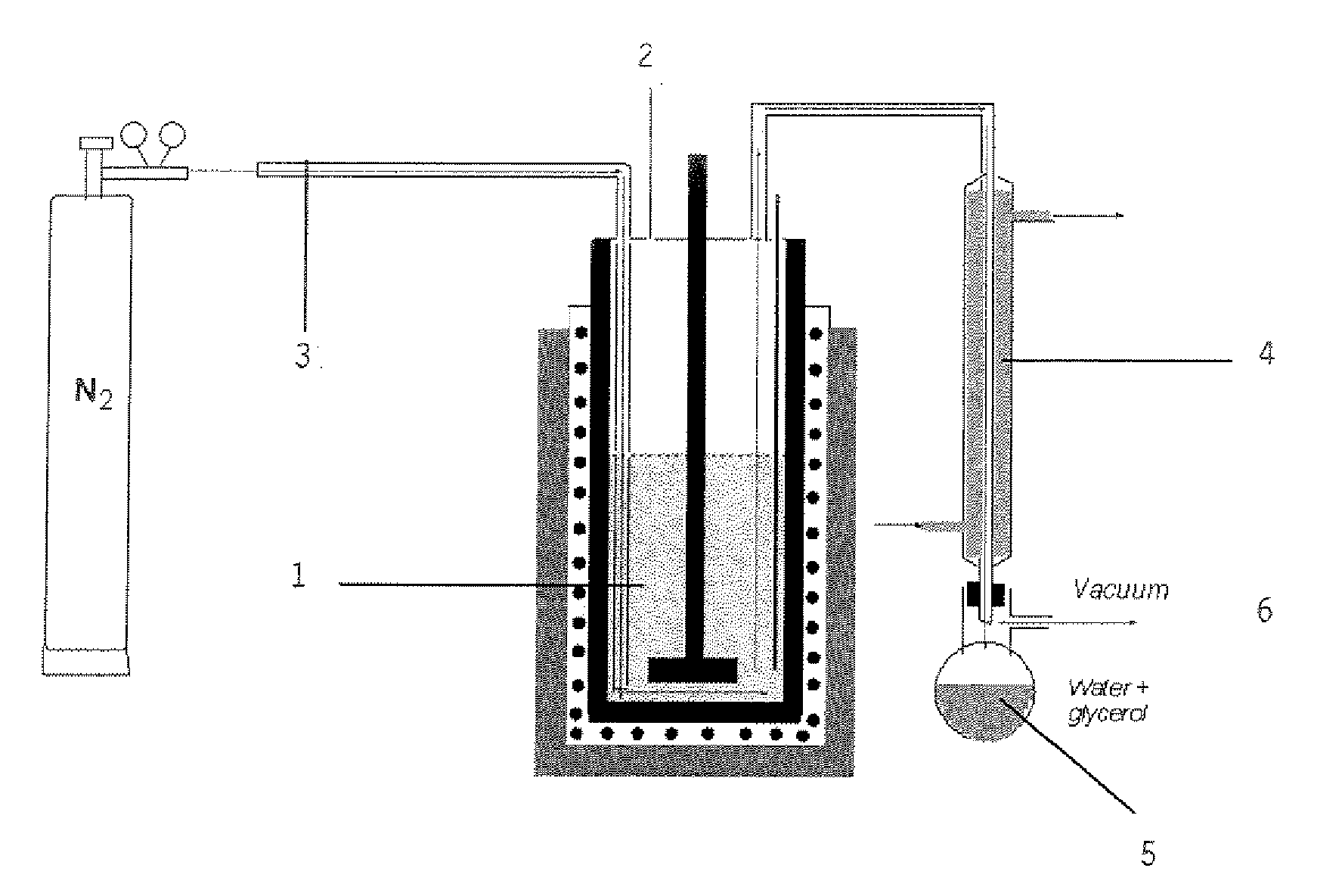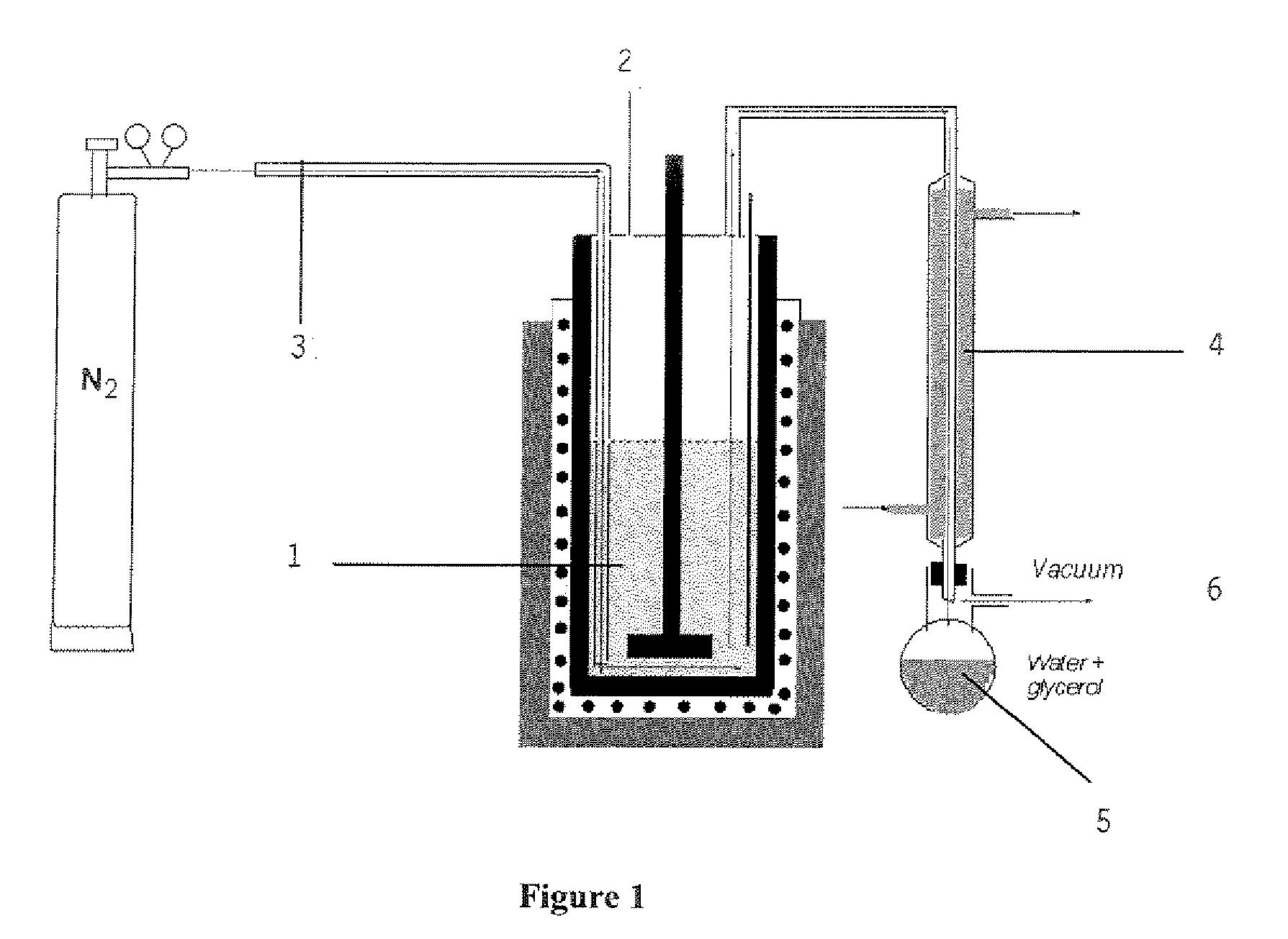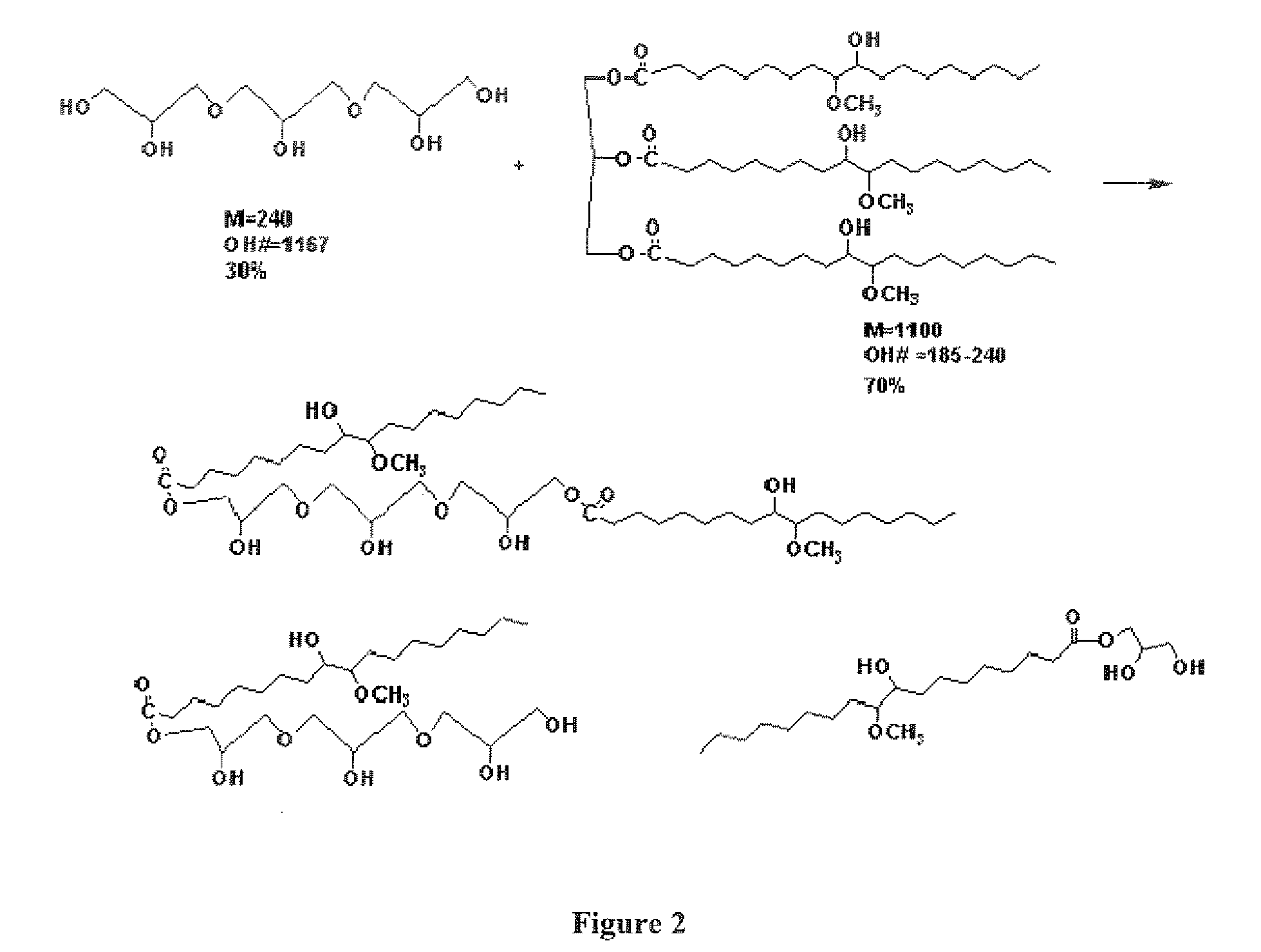Polyglycerol based polyols and polyurethanes and methods for producing polyols and polyurethanes
a polyglycerol and polyurethane technology, applied in the field of polyglycerol based polyols and polyurethanes and methods for producing polyols and polyurethanes, can solve the problems of limited compatibility, high cost of glycerol historically, and the inability to widely use polyglycerol in the polyurethane industry, so as to improve the method of making, improve the quality of polyols, and improve the effect of high functionality
- Summary
- Abstract
- Description
- Claims
- Application Information
AI Technical Summary
Benefits of technology
Problems solved by technology
Method used
Image
Examples
Embodiment Construction
[0016]The polyols derived from renewable resources and the polyurethanes of the invention will now be described in detail with reference to the examples set forth below, and methods for making the polyols will be described with reference to the drawing figures, in which like reference numerals refer to like steps throughout.
[0017]Vegetable oil polyols, including castor oil, and vegetable oil based polyols obtained by various chemical methods, including or example, ozonolysis of vegetable oils, hydroformylation of vegetable oils, ring opening of epoxy groups of epoxidized vegetable oils, hydrogenation of epoxidized vegetable oils, having hydroxyl numbers in the range of approximately 60 to approximately 300, or more, mg KOH, can be reacted with aromatic di- or poly-isocyanates (such as MDI or PAPI) to provide polyurethanes. If such vegetable oil polyols are used in a mixture with glycerol in order to sufficiently increase functionality for production of rigid polyurethane foams, the ...
PUM
| Property | Measurement | Unit |
|---|---|---|
| viscosity | aaaaa | aaaaa |
| viscosity | aaaaa | aaaaa |
| viscosity | aaaaa | aaaaa |
Abstract
Description
Claims
Application Information
 Login to View More
Login to View More - R&D
- Intellectual Property
- Life Sciences
- Materials
- Tech Scout
- Unparalleled Data Quality
- Higher Quality Content
- 60% Fewer Hallucinations
Browse by: Latest US Patents, China's latest patents, Technical Efficacy Thesaurus, Application Domain, Technology Topic, Popular Technical Reports.
© 2025 PatSnap. All rights reserved.Legal|Privacy policy|Modern Slavery Act Transparency Statement|Sitemap|About US| Contact US: help@patsnap.com



